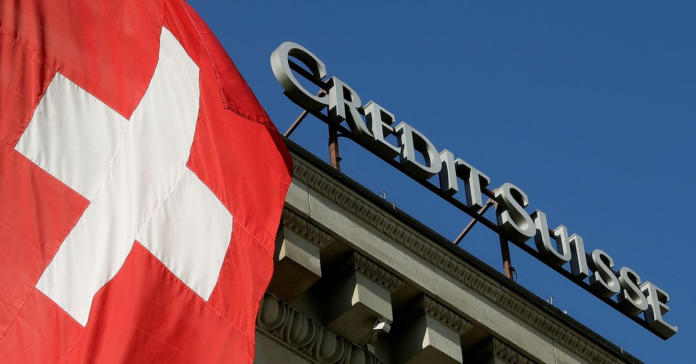MILAN, March 17 (Reuters Breakingviews) – In Switzerland’s wildly successful 2021 tourism campaign, tennis star Roger Federer promoted the Alpine nation as a place for “vacation without drama”. The Swiss National Bank’s intervention this week to prop up Credit Suisse (CSGN.S) was anything but uneventful. Fifteen years after the bailout of rival UBS (UBSG.S), fresh turmoil has put another dent in the Swiss armour of financial stability.
loading
The country’s two recent banking crises are very different. During the global meltdown of 2008, UBS was sitting on tens of billions of dollars of bonds backed by subprime mortgages and other illiquid assets. Then-boss Marcel Rohner was forced to write them down, blowing a huge hole in the bank’s equity. To rescue the country’s biggest lender, the government in Bern injected 6 billion Swiss francs in capital while the central bank carved off some 40 billion Swiss francs of toxic assets into a special purpose vehicle.
Credit Suisse’s loan book is in better shape. But years of mismanagement have nonetheless provoked a crisis of confidence at the lender led by Ulrich Körner that accelerated after last week’s collapse of Silicon Valley Bank. To avert financial disaster, the SNB had to again step in, this time with a 50 billion Swiss franc credit line. That may be a stopgap for more radical measures.
Propping up wobbly big banks is not without risk, though. Swiss banking assets are the highest relative to GDP of any developed country; the combined balance sheets of Credit Suisse and UBS were worth around 260% of economic output in 2020, SNB data shows.
Reuters Graphics
Intervention may not cost taxpayers any money. The SNB made more than 5 billion Swiss francs from winding down UBS’s bad bank and the state booked over 1 billion Swiss francs of gains on its equity stake. Credit Suisse will pay interest on its central bank funds. Nevertheless, the latest intervention is bound to revive the debate over whether Switzerland can afford to backstop giant financial institutions.
The bailout is also another blow to Switzerland’s international banking reputation. Before the financial crisis, bank secrecy was arguably the main lure for private banking clients. After a 2009 tax spat with the United States led to its demise, Switzerland’s perceived solidity became its main financial selling point. In 2021 bank customers had stashed $2.4 trillion of offshore wealth with Swiss banks.
Credit Suisse’s travails once again undermine this message. Nervous clients pulled more than 100 billion Swiss francs from the Zurich-based bank in the fourth quarter of last year and may be hesitant to return. The authorities had no choice but to shore up the bank, and the broader financial system. But presenting Switzerland as a country with no banking drama just got harder.
Follow @LJucca on Twitter
CONTEXT NEWS
A day after its shares had plunged as much as 30%, Credit Suisse said on March 16 it would borrow up to 50 billion Swiss francs from the Swiss National Bank (SNB), using credit lines the central bank offered against the bank’s high-quality assets.
At the end of 2021, total banking sector assets in Switzerland stood at 3.9 trillion Swiss francs, equivalent to 520% of Switzerland’s GDP, the highest among developed countries, according to the 2022 Swiss Financial Stability Report by the SNB. The ratio was 800% at the beginning of the financial crisis in 2007-2008. Switzerland’s two biggest banks, UBS and Credit Suisse, each had total asset exposure of between 120% and 140% of the country’s GDP.
Editing by Peter Thal Larsen and Oliver Taslic
Our Standards: The Thomson Reuters Trust Principles.
Opinions expressed are those of the author. They do not reflect the views of Reuters News, which, under the Trust Principles, is committed to integrity, independence, and freedom from bias.


